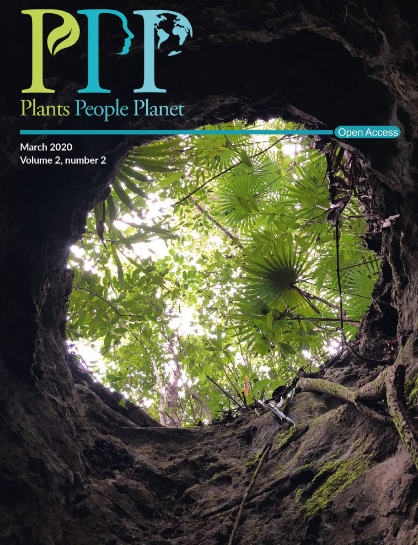Small and in‐country herbaria are vital for accurate plant threat assessments: A case study from Peru
IF 3.6
2区 环境科学与生态学
Q1 BIODIVERSITY CONSERVATION
引用次数: 0
Abstract
Herbaria can be considered plant libraries, each holding collections of dried specimens documenting plant diversity in space and time. For many plant species, these are our only evidence of their existence and the only means of assessing their conservation status. Specimens in all herbaria, especially those in small and often under‐resourced herbaria in megadiverse countries, are key to achieving accurate estimates of the conservation status of the world's plant species. They are also part of a country's shared heritage and critical contributions to knowledge of the world's diversity. Internationally agreed targets to assess the conservation status of all plant species rely largely on digitised distribution data from specimens held in herbaria. Using taxonomically curated databases of herbarium specimen data for the mega‐diverse genera Begonia (Begoniaceae) and Solanum (Solanaceae) occurring in Peru, we test the value added from including data from local herbaria and herbaria of different sizes on estimations of threat status using International Union for Conservation of Nature (IUCN) Red List criteria. We find that the Global Biodiversity Information Facility (GBIF) has litter data from Peruvian herbaria and adding these data influences the estimated threat status of these species, reducing the numbers of Critically Endangered and Vulnerable species in both genera. Similarly, adding data from small‐ and medium‐sized herbaria, whether in‐country or not, also improves the accuracy of threat assessments. A renewed focus on resourcing and recognising the contribution of small and in‐country herbaria is required if we are to meet internationally agreed targets for plant conservation. We discuss our case study in the broader context of democratising and increasing participation in global botanical science.小型和国内草药库对准确评估植物威胁至关重要:来自秘鲁的案例研究
草本植物可以被视为植物图书馆,每个图书馆都收藏着记录植物在空间和时间上多样性的干燥标本。对于许多植物物种来说,这些是我们证明其存在的唯一证据,也是评估其保护状况的唯一手段。所有植物标本馆的标本,尤其是大型多样化国家中资源往往不足的小型植物标本馆,是准确估计世界植物物种保护状况的关键。它们也是一个国家共同遗产的一部分,也是对了解世界多样性的重要贡献。评估所有植物物种保护状况的国际商定目标在很大程度上依赖于草药库标本的数字化分布数据。使用秘鲁的秋海棠属(秋海棠科)和茄属(茄科)的植物标本分类数据库,我们使用国际自然保护联盟(IUCN)红色名录标准,测试了当地植物标本馆和不同规模植物标本馆的数据对威胁状态估计的附加值。我们发现,全球生物多样性信息基金(GBIF)有来自秘鲁草药库的垃圾数据,添加这些数据会影响这些物种的估计威胁状态,从而减少两个属的极度濒危和易危物种的数量。同样,增加中小型草药库的数据,无论是否在国内,也提高了威胁评估的准确性。如果我们要实现国际商定的植物保护目标,就需要重新关注资源,并承认国内小型草药库的贡献。我们在全球植物科学民主化和日益参与的更广泛背景下讨论我们的案例研究。
本文章由计算机程序翻译,如有差异,请以英文原文为准。
求助全文
约1分钟内获得全文
求助全文
来源期刊

Plants People Planet
Multiple-
CiteScore
9.90
自引率
5.90%
发文量
81
审稿时长
12 weeks
期刊介绍:
Plants, People, Planet aims to publish outstanding research across the plant sciences, placing it firmly within the context of its wider relevance to people, society and the planet. We encourage scientists to consider carefully the potential impact of their research on people’s daily lives, on society, and on the world in which we live. We welcome submissions from all areas of plant sciences, from ecosystem studies to molecular genetics, and particularly encourage interdisciplinary studies, for instance within the social and medical sciences and chemistry and engineering.
 求助内容:
求助内容: 应助结果提醒方式:
应助结果提醒方式:


